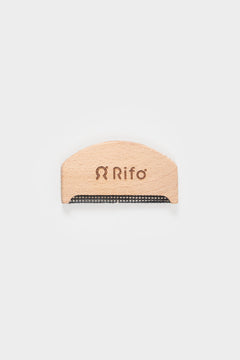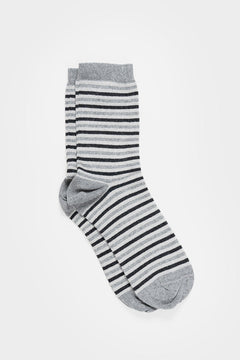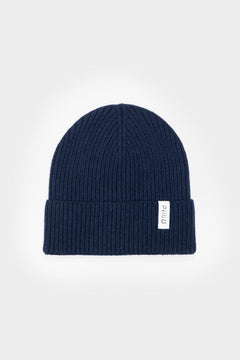Tropical mix, this is the product category name of the 40-50 kg bales full of our old clothes that are exported every day to the developing world.
Some time ago we wrote an article about the separate collection of old clothes through urban bins in Italy. What emerged was that 68% of what is thrown away is selected for reuse and sent often to the developing countries.
We want to start from here, from these Mitumba bales, the old clothes directed to Africa. Those bales carry with them a controversial issue, which brings with it questions not only about circular economy and sustainable fashion, but also anthropological and cultural ones.
We decided to do it for Fashion Revolution Week 2021, to see fast fashion from an alternative point of view: the damages that it causes once it becomes waste, no matter how far this happens from our reality.
What does Mitumba mean?
In Swahili the word Mitumba means "second hand".
However Mitumba is also a business: local african retailers purchase bales of tropical mix from Western countries and distribute them in these developing world markets.

(Searching for "Mitumba" on Youtube or on social networks you will find the most connected of these local retailers, who use social media channels to promote their business and explain how to become a retailer).
But what does end up in these bales exactly? We could say the selection of the selection.
Above what we throw away in the beans we keep in our countries:
1. The clothes made of valuable material that can be recycled.
2. Winter clothes (not suitable for Africa climate).
3. Those pieces that can be interesting on the western vintage market.
The remaining mix of summer light clothing is sent away, in most cases towards Africa.
Does second hand in Africa create jobs or stifle the local economy?
The controversy over the Mitumba business is this one: if in Africa the demand of clothes is covered mainly from our second-hand, how can a local clothing industry be developed?

But maybe we should ask ourselves: what kind of industries are we talking about? Is there the risk that this empty economical space will be taken by polluting and cheaper fast fashion industries?
Some countries try a protectionism strategy. Like Rwanda, Uganda and Tanzania, which since 2019 have banned the import of Mitumba bales, although there are many doubts about the long-term results of these choices.
Then we should also talk about the jobs created by the Mitumba economy. According to Humana, an international network that works in 14 European countries for the collection of old clothes, these are more or less the jobs created thanks to their Mitumba's export to Africa and America:

As you can see in 2020 there was a noticeable decline, probably due to pandemic. In any case, we are talking about little less of 10,000 jobs, the number of people who could live in a small village in Africa.
Second hand for necessity, trend or awareness?
It might seem like a trivial question, but what would be really interesting to understand is why do African countries buy so much second-hand clothes?
Fashion? Looking for western influences? Awareness of environmental damages? It's not easy to tell, but what we can understand is that this consumption trend is rising.
Always according to Humana, these are the data about the purchase of the second-hand clothes they exported to Africa and Belize, compared to the purchases between Europe and the US, in their second-hand shops.

One thing is fore sure: in Africa the majority of the population still lives in rural areas, far from shopping centers. As Humana points out in its Progress Report 2018, here the economy of the villages is all based around markets. Without these old clothes, a large part of the population would probably be left out of the clothing supply.

Why do second hand western clothes end up in landfills in Africa?
After having pointed out the big picture of second hand western clothes in Africa, let's go back to the Mitumba bales, to what they contain.
In a documentary made by Eeeb, European Environmental Bureau, they reveal some alarming aspects of the Mitumba bales sold in Kenya.
Kenyan retailers agree: a consistent part of what arrives is poor quality and therefore is dumped in landfills, which are often open air. The ratio on a bale of tropical mix is roughly this: 80% can be sold on the markets, while 20% is garbage.

In Kenya, the largest landfill is the Nairobi dump, Dandora, one of the most polluted area on the planet. According to Africa Collect Textiles, approximately 20 million kg of textile waste must be disposed by the city every year.
The damage of second hand fast fashion
Fast fashion is a dangerous, wherever it is in the world. And even more than fast fashion, bad quality garments, those made with obsolete materials and harmful chemicals are a damage.
A garment that is born as waste is unlikely to become something else and its impacts on the planet will increase with time, no matter how far away we send it. It will pollute other waters, be burned in other landfills (most likely managed less efficiently than those in developed western countries), and will cause diseases to other people. Why should a part of the world settle with our waste?

If our consumption habits were more oriented to quality rather than price, this would not happen.
It has now become a mantra: fast fashion is not cheap, "someone, somewhere, is paying for it".
We consider this blog post in progress, an open topic we'd like to discuss with experts and anyone who follows us.
What do you think? Are there any important issues we didn't mention? Write us everything in the comments!








